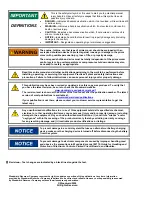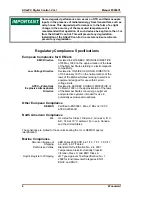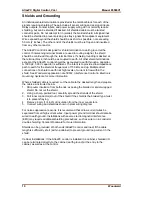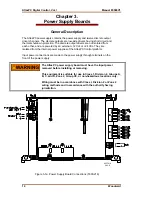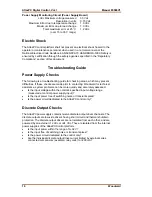
Manual 85586V1
AtlasPC Digital Control, Vol. I
Woodward
1
Chapter 1.
General Information
Introduction
This manual describes the Woodward AtlasPC™ Digital Control. It provides a
variety of useful information for the user ranging from simple basic descriptions to
detailed information on wiring, specifications, and functionality. Included are:
•
General information on the AtlasPC platform and available versions
•
A physical description of the control hardware
•
A description of all AtlasPC modules
•
A listing of accessories that may be used with the platform
•
Information on AtlasPC communications and distributed I/O interfaces
•
Installation and maintenance
•
Troubleshooting
information
•
For information on programming, networking, and communication protocols,
refer to the software manual provided with the control.
AtlasPC Control Description
The AtlasPC digital control platform fits a wide range of prime mover
applications. These include small mechanical-drive units with a minimum of
complexity on up to large two-shaft gas turbine generator sets that require unit
sequencing and load control. The AtlasPC control is programmed to the specific
needs of the prime mover and its driven load.
At the heart of the AtlasPC control is a 32-bit microprocessor that runs a powerful
Real Time Operating System. This operating system is specifically designed to
control the proper timing of all application code so that dynamic performance of
the final control system is absolutely guaranteed. Each piece of the application
code is “scheduled” under a Rate Group structure that ensures execution of the
code at a predetermined time.
Application programming is accomplished via Woodward’s GAP™ Graphical
Application Program. GAP is a pictures-to-code system that provides a high-level
programming environment for users who have control expertise but do not have
specific programming skills. Once the application program has been generated
and loaded into the AtlasPC control, the user can view variables and tune the
control with a variety of Woodward service tools. Connection to other devices,
such as an HMI, is accomplished by means of serial Modbus®* or Ethernet ports
on the control. The desired information flow is programmed into the control via
GAP. If required, distributed I/O can be connected using optional communication
modules that support Profibus, DeviceNet, and Ethernet protocols.
*—Modbus is a trademark of Schneider Automation Inc.
The hardware platform is based on the industry-standard PC/104 bus structure.
In the AtlasPC control, the backplane is the SmartCore board. The PC/104
modules are “stacked” onto the SmartCore board in order to add I/O or other
functionality. Each of the stacked modules has an on-board DIP switch that is
positioned to the unique address of that particular module. The AtlasPC control
uses a second stack called the Power Bus Stack. This stack is used primarily for
power-related I/O. The control runs on low-voltage dc power (18–32 Vdc).
AtlasPC field wiring is accomplished via terminal blocks that plug into the control
modules.
Summary of Contents for AtlasPC
Page 8: ...AtlasPC Digital Control Vol I Manual 85586V1 vi Woodward...
Page 130: ...AtlasPC Digital Control Vol I Manual 85586V1 122 Woodward...
Page 131: ......
Page 132: ......
Page 133: ......


